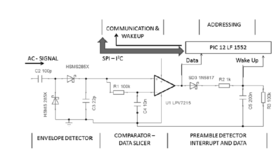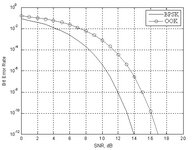KAGAN
Newbie
Hello everyone,
I designed a LNA with 868MHz center frequency. I want to use this LNA as a RF Receiver front end. The receiver has also the same center frequency.
Receiver has -55dBm sensitivity i want to increase it. So my target specifications is S21>=20dB, NF>20dB, S11 and S22<-10dB and all of this requirements are valid between 857-947MHz frequency range. So that i guess my LNA has a bandwidth of 90MHz. So i know there is a formula for receiver sensitivity -174+NF+10log(BW)+SNR. But i have no idea about SNR. I designed this LNA with Advanced Design System. So i have 2 questions. The logic behind the bandwidth is correct? and How can i measure SNR in this formula? or is there another method i can use for calculate receiver sensitivity?
I designed a LNA with 868MHz center frequency. I want to use this LNA as a RF Receiver front end. The receiver has also the same center frequency.
Receiver has -55dBm sensitivity i want to increase it. So my target specifications is S21>=20dB, NF>20dB, S11 and S22<-10dB and all of this requirements are valid between 857-947MHz frequency range. So that i guess my LNA has a bandwidth of 90MHz. So i know there is a formula for receiver sensitivity -174+NF+10log(BW)+SNR. But i have no idea about SNR. I designed this LNA with Advanced Design System. So i have 2 questions. The logic behind the bandwidth is correct? and How can i measure SNR in this formula? or is there another method i can use for calculate receiver sensitivity?
--- Updated ---
I am sorry i wrote NF wrong. It should be NF<2dBHello everyone,
I designed a LNA with 868MHz center frequency. I want to use this LNA as a RF Receiver front end. The receiver has also the same center frequency.
Receiver has -55dBm sensitivity i want to increase it. So my target specifications is S21>=20dB, NF>20dB, S11 and S22<-10dB and all of this requirements are valid between 857-947MHz frequency range. So that i guess my LNA has a bandwidth of 90MHz. So i know there is a formula for receiver sensitivity -174+NF+10log(BW)+SNR. But i have no idea about SNR. I designed this LNA with Advanced Design System. So i have 2 questions. The logic behind the bandwidth is correct? and How can i measure SNR in this formula? or is there another method i can use for calculate receiver sensitivity?

